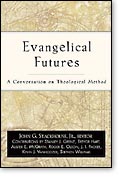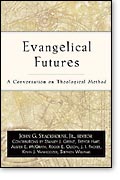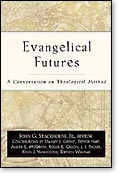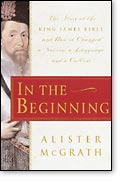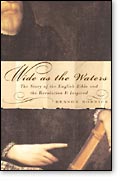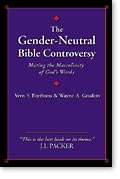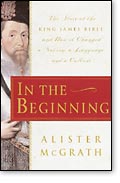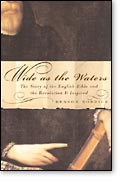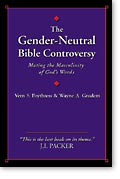In the November/December 1996 issue of Books & Culture, reviewing Andrew Walls’s book The Missionary Movement in Christian History: Studies in the Transmission of Faith (Orbis), Mark Noll wrote that “if a more important book on the general meaning of Christian history is published this year—or even this decade—it will be a surprise.” Last year, the book was included in Christianity Today’s list of the 100 most influential Christian books of the twentieth century. That’s a fair measure of the impact of Andrew Walls’s work. Walls, who is professor of world Christianity at Princeton Theological Seminary and founder of the Center for the Study of Christianity in the Non-Western World at the University of Edinburgh, has a new book just out from Orbis, The Cross-Cultural Process in Christian History. Don Yerxa spoke with Walls at Eastern Nazarene College in January of this year prior to Walls’s lecture in the ENC History Department’s Distinguished Lecture Series.
Would you tell us a little bit about your childhood and early religious experiences?
I come from a working-class family. My mother was traditionally devout. Though I believe he prayed every day of his life, I don’t recall my father ever going to church. Like many people from that generation, he believed that the church had abandoned working people and was not standing for righteousness. The person I have realized since that was a great influence on me was my grandfather, who lived with us. He had run away to sea from Dundee at the age of twelve and had traveled the world. He eventually settled down looking after sheep in Patagonia. My earliest memories include floods of what I now realize to be very bad Spanish, but also insights into things from all over the world. He himself was a rugged old unbeliever, but the impressions remained with me for a long time.
I went to Sunday school and church and in adolescent years made a commitment to Christ.
Did your education encourage or hinder your call to missions?
Influences while a student were very important in shaping my Christian life and understanding. A deep impression of the mission field was there from an early stage and a very definite consciousness of the rest of the world, which I think had come from this early exposure from my grandfather. During my student years at Exeter College, Oxford, I felt a tension. A desire to be a missionary remained. I was very conscious, however, of gifts I didn’t have, including the obvious pastoral gifts you are looking for in a minister. The other part of the tension was my deep absorption in academic work—a desire and, as I believed, a calling for Christians to continue in these lines. I couldn’t reconcile the missionary and the academic lines, possibly because I was thinking of mission work in rather conventional terms that one got from Sunday school and church. They did come together, of course, and when the opening came it was indeed desired that it be someone with a good academic background, with graduate work, and so on. I had, in the meantime, become the librarian and general factotum at Tyndale House in Cambridge in its early days as a biblical research library. I had been in a research setting for some time and was still not clear how this reconciled with what I still retained from the missionary vocation.
You have written about an epiphany experience early in your time in West Africa in which you came to recognize that the African church was experiencing essentially the same tensions as those of the early church. Could you describe how that realization dawned on you?
In the 1950s, we still talked about “the younger churches,” and the expectation was that the younger churches would learn from the experience of the older ones. I was to teach early church history. Church history was my background; I had done my work at Oxford in Patristics and had written on the apostolic tradition of Hippolytus. I started teaching still very much with this idea of imparting the lessons of the past—as the arbiter of this—to an expectant audience, which obviously had great difficulty in making anything out of this peculiar set of information. The students wrote it all down. Ritual transfer of knowledge was important. But it clearly didn’t have any impact or make any particular sense to people. This attitude of imparting lessons was combined with a very critical sense of the existing African church and great awareness of its faults,—and very little awareness, as I began to discover, of its inwardness, of where it had come from.
I do still remember the sense with which it came to me: “Good gracious, man, you’re living in a second-century church! Why don’t you just shut up and watch what is going on around you?” Well, it has taken me the rest of my life working with it, but certainly I think there was the beginning of a new attitude, both to the churches in Africa and eventually to church history itself. In fact, the African and Asian churches are jam-packed with resources for the study of early church history. There is more there than you will get in the Bodleian Library for the study of the early church. You very often have got the same sort of material as you had in the early church, sometimes the same media.
Was that understanding well-received in the church history community?
Those were heady times. Those were the times when the African nations were galloping toward independence. Ghana set the example in 1957. Then everybody was at the door. We were genuinely trying to build an African scholarship, but of course we did believe it would be an extension of European scholarship. There was a Theological Education Fund, supported by Rockefeller money, which supplied large quantities of theological books for African and Asian libraries and underwrote faculty development for theological institutions. I think most of us assumed the resulting scholarship would be measured in Ph.D.’s from Western institutions, who would read the same books we had read and ultimately write books on the same sort of topics. I gradually came to realize, however, the importance of the history of African churches just for a professional teacher of church history. At first, I thought of this as a sort of hobby, something one ought to do because one was living in Africa without realizing how intense and demanding a study it would require. “Real church history” there needed a whole lot of understanding of local society that was the equivalent of what you would be doing if you were working on the second or third century.
Why do you consider Christianity to be a non-Western religion?
The great fact of the century just passed was the demographic and cultural shift in the center of gravity of the Christian faith. If you look at the beginning of the twentieth century, Christianity was quite clearly a Western religion. More than 80 percent of its adherents lived in Europe or North America. If you look at the end of the century, well over half of the world’s Christians lived in Africa, Asia, Latin America, and the Pacific. And every year there are fewer Christians in the West and more Christians in the rest of the world. However we interpret it, whatever we think of it, we’ve already got well over half the world’s Christians living in the Southern continents. At some point in the next century, if present trends continue, we could well find that two-thirds of the world’s Christians are living in those areas.
Now, this isn’t the first time that Christianity has been associated with other parts of the world. It has had a much longer continuous history in parts of Africa than it has had in Scotland and infinitely longer than it has had in the United States. So in many ways it is going back to an earlier state. But, nonetheless, the change has been very rapid, and I doubt if either in the Northern world or the Southern we’ve quite adjusted to the change or to the implications of it.
You describe the diffusion of Christianity as “serial” rather than “progressive.” Could you explain that distinction?
You get different types of expansion in the great religions of the world. Hinduism is essentially unifocal. In the end you can’t separate it out from India. Hinduism is Indianism. You could have a tradition like the Iranian, which can have a catalytic effect on one religion after another. Amongst the Aryans, it had an impact that produced what we eventually came to call Hinduism. It had a deep influence on Judaism, Christianity, and Islam. And yet, if you look at the Iranian tradition today, you’ve got a million or so Parsis in India and a few hundred thousand persecuted Zoroastrians in Iran. It hasn’t produced a continuing community, whereas with Islam, you have got something like progressive expansion that moves out steadily from its geographical center. It covers a wide area and is remarkably resilient. There are exceptions, but most of the areas that have been Islamic have so far stayed that way.
And it is there that I think the contrast with Christianity becomes so clear. Within 40 years of the Crucifixion, the Resurrection, and Pentecost, the working model of what the faith of Jesus was to be like—the one that he had supervised himself and was most closely associated with the apostles—is scattered.
One might well have expected the Christian movement, essentially Jewish in its origin, to die out with the collapse of its earliest model. The reason it didn’t was that it had crossed a cultural frontier. We see in the Book of Acts that cultural frontier being crossed, crucially in Antioch. You get an overwhelmingly Hellenistic Christianity developing something that dwarfs the old Jewish movement. And it settles in the richest provinces of the Roman Empire: Egypt, Syria, and Asia Minor. Yet the time comes when those very provinces come under Islamic rule after the Western Roman Empire be-comes engulfed.
The important thing, then, is that a cultural frontier has again been crossed when the barbarian people of the north and west—from whom I myself am descended—become Christians. And right down to modern times, just at the point when in Europe we realize we are in a post-Christian society, where Christian adherence and practice has dramatically reduced within my own lifetime, we find churches in Africa, Asia, and Latin America coming into their own. So, I think you can say that cross-cultural diffusion has been the lifeblood of historic Christianity.
Christianity and Islam had so much in common in their histories and origins. They have been the two great missionary faiths, and they have often been competitors for the same people. They have both covered huge areas and diverse cultures, and yet their histories of expansion have been different. Islam has been much more successful at holding on to the communities which it has gained, whereas Christianity’s tendency is to wither at the center and grow at or beyond the circumference. So there is a sort of death and resurrection. But the resurrection is somewhere else. There is a moving on, a passing of the torch.
In this respect, I think it is a serial type of expansion. No one place or culture owns it. It doesn’t have a Mecca. It doesn’t have a single geographic center. It doesn’t have permanence anywhere. Christian expansion isn’t a matter of gains to be plotted on a map. It’s a process of rise and fall, advance and recession. It has been that now for 2,000 years. Presumably we can now take that as characteristic of its history.
Any clues as to why Christianity exhibits that sort of pattern?
I have often wondered about this. I think there are two things one needs to look at. There certainly seems to be a vulnerability at the heart of Christianity. Maybe it is the vulnerability of the Cross. If we look at a circumstance such as the disappearance of the first model of Christianity, that Jewish church in Jerusalem that collapses really with the Jewish state in A.D. 70, it is not easy to point any fingers and say this was the fault of so and so. What is clear is that God’s purposes in the spreading of the gospel didn’t depend on that original church. By the time it disappeared, there was another one.
In Islam you have in the end certain fixed cultural norms that are tied into the language. The revelation of God is in Arabic, and it is fixed in heaven forever. For Christians, the Word of God is translatable, infinitely translatable, into different languages. But it also has to be translated into different cultures. Islam remains a prophetic religion. God speaks.
The human response is to obey. But Christianity is an incarnational religion. God becomes human. He takes human shape. He takes human shape in a particular place, a particular locality, culture-specific. The only sort of humanity we know is culture-specific humanity. So there must be a continual translation into culture-specific terms elsewhere. If that translation process stops, then Christianity withers. Yes, there is a vulnerability, a fragility. If it is the vulnerability of the Cross, it is the fragility of the earthen vessel, and sometimes they get broken.
I cannot help but note that you are using academic categories of historical analysis along with faith statements about the vulnerability of the Cross.
I suppose what I am doing is theologizing on the way. Most of my work is as an historian of religions—an historian of religions whose principal concern is the history of Christianity. Now, that involves not just what events take place and how they should be interpreted, but making some sort of generalizations about the Christian faith, especially if one is looking at it in relation to other faiths. One step beyond that takes us to the believer’s position, to questions that can only be answered from within. I can make an historical statement as a matter of observation about the difference between Christianity and Islam in their respective histories—the one being serial; the other being progressive. You asked me a question: “Why?” And I must be much more tentative about that than I am about the other. But the only answers I can make are from what appears to be the respective nature of the two faiths. In the end, if I have to speak from within one of them, I do so with another vocabulary.
Your work invites a question about what Christianity finally is. What unites the many local expressions of Christianity and makes them part of a global faith?
What we are seeing over a wide geographical area now, you also see if you look over a wide historical area. If you look at the manifestations of Christianity moving from early Jerusalem through the time of the Greek Fathers through to Catholic times through various Western expressions—all these wide cultural manifestations come from the need to translate Christianity into specific terms of cultural reality, specific segments of social reality. The Word of God. The Word who becomes flesh. The translation of Christ. Christ takes flesh again as he is received by faith in these different settings.
I don’t think we should try to define Christianity by drawing up some sort of creed. No harm in doing it, but I don’t know that things are settled by creeds because creeds themselves come out of a particular cultural expression of Christian faith. But there are certain basic convictions which have always linked with different expressions of historic Christianity. One is we worship the God of Israel. You can’t cut that connection. The God of heaven is also the God of Abraham, Isaac, and Jacob, the God of the Scriptures. You can’t cut the connection with Israel. In the second place, the One who appeared as Jesus of Nazareth is the Christ. That has ultimate significance. It is a cultural matter how you define ultimate significance, but it is ultimate in that you can’t get beyond it. God works in Christ. The third thing is that God is active where the believers are. It is not a passive belief. This is still something that is happening. And the community of believers transcends time and space. It is not defined in terms of one community.
You’ve given a Trinitarian response.
I think that if you are looking at it theologically, you can say, yes, there is God the Father; there is God the Son; there is God the Holy Spirit. There is the Church. You would have to go further, I think, to say that essentially Christians read the same Scriptures. And they have a special use for bread and wine and water, although sometimes there are local substitutes for the bread and wine. But it is in those areas that you have got common convictions, common affirmations. And if you are taking it seriously, this idea of one body is part of universal Christian conviction. This is something that transcends time and space. Then all these different local expressions belong to each other. They are not separate local forms that are private. They are part of one Christ.
And I think we must add that biblical faith is inseparable from historical consciousness. If Christianity means anything at all, it means that God saves us through an historical process. Not just an historical event. It is easy enough to say that the Crucifixion and Resurrection of Christ are historical events, that Christ is an historical personage, and so on. But it is more than that! It is integrated in an historical process. If, after all, God intended to save humanity by means of the Incarnation, why didn’t he do so immediately after the Fall and avoid all this hassle? In fact, that is not the way it goes. It goes through a particular clan moving out of Mesopotamia, that clan becoming tribes, the tribes becoming a nation, that nation going up and down and up and down and down. It is not just centuries, but millennia before the Christ appears. Even then the process isn’t wound up. It is left to run on for another couple of millennia to date.
So essential to any Christian view of the world is a historical sense. One has to take that seriously, if you will allow me to theologize again. If you think of those remarkable words at the end of the epistle to the Hebrews, you get the account of Abraham, Isaac, and all the others. Then it is all summed up by saying these all died in faith, not having received the promises, God having prepared a better thing, not for them, but for us (referring there to the people to whom he was writing the letter). In other words, this non-descript group of Christians to whom he is writing are tied into the bundle. Abraham is waiting for them. If your theology allows you to take in the 2,000 years since the epistle was written, then Abraham is waiting for us, too. And we are none of us complete without the other. None of our stories is complete in itself.
Donald A. Yerxa is professor of history at Eastern Nazarene College and assistant director of The Historical Society.
Copyright © 2001 by the author or Christianity Today/Books & Culture Magazine. Click here for reprint information on Books & Culture.


